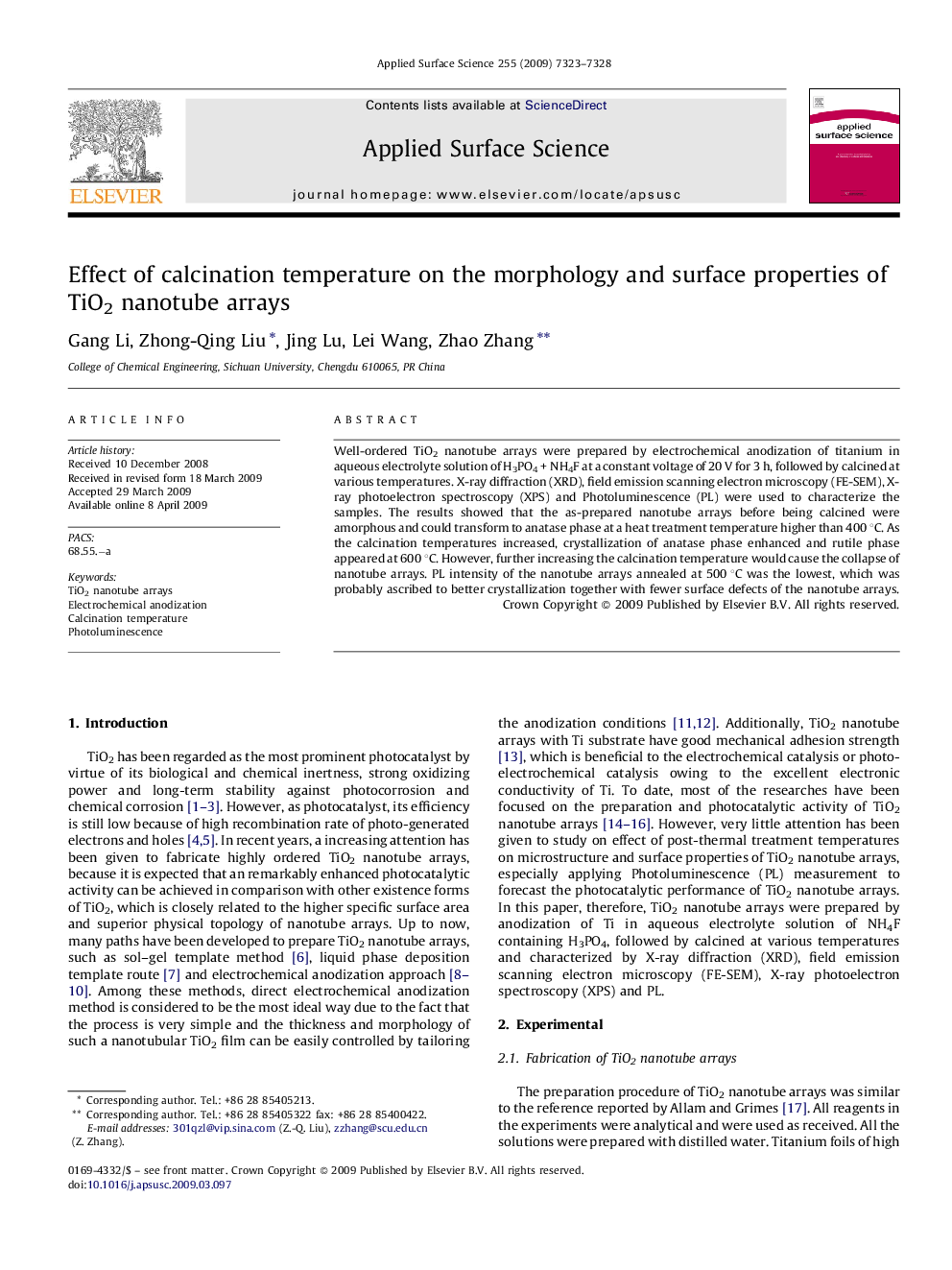| Article ID | Journal | Published Year | Pages | File Type |
|---|---|---|---|---|
| 5367061 | Applied Surface Science | 2009 | 6 Pages |
Well-ordered TiO2 nanotube arrays were prepared by electrochemical anodization of titanium in aqueous electrolyte solution of H3PO4 + NH4F at a constant voltage of 20 V for 3 h, followed by calcined at various temperatures. X-ray diffraction (XRD), field emission scanning electron microscopy (FE-SEM), X-ray photoelectron spectroscopy (XPS) and Photoluminescence (PL) were used to characterize the samples. The results showed that the as-prepared nanotube arrays before being calcined were amorphous and could transform to anatase phase at a heat treatment temperature higher than 400 °C. As the calcination temperatures increased, crystallization of anatase phase enhanced and rutile phase appeared at 600 °C. However, further increasing the calcination temperature would cause the collapse of nanotube arrays. PL intensity of the nanotube arrays annealed at 500 °C was the lowest, which was probably ascribed to better crystallization together with fewer surface defects of the nanotube arrays.
